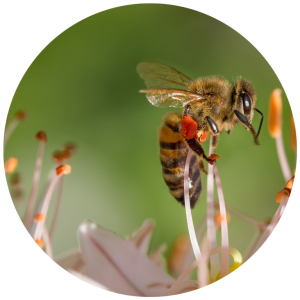 You don’t need a lot of space to start a pollinator garden. Even a few containers of flowers can attract hungry bees and butterflies. To plan a pollinator garden, students will need to know the basic needs of wildlife — food, water, shelter, and places to rear young. This guide will help you and your students learn about native pollinators and their habitat needs, and collect the necessary information for creating such a habitat in your schoolyard. View Resource »
You don’t need a lot of space to start a pollinator garden. Even a few containers of flowers can attract hungry bees and butterflies. To plan a pollinator garden, students will need to know the basic needs of wildlife — food, water, shelter, and places to rear young. This guide will help you and your students learn about native pollinators and their habitat needs, and collect the necessary information for creating such a habitat in your schoolyard. View Resource »
Designing a Sensory Garden
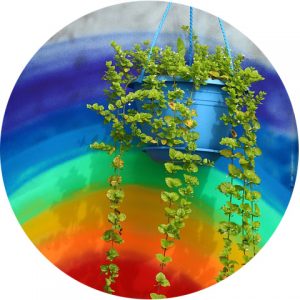 With their incredible diversity of shapes, sizes, colors, scents, and textures, plants offer limitless options for designing a garden to engage the all the senses. This guide provides tips for creating a special garden space that will allow you and your young gardeners to explore through sight, smell, taste, touch, and hearing. View Resource »
With their incredible diversity of shapes, sizes, colors, scents, and textures, plants offer limitless options for designing a garden to engage the all the senses. This guide provides tips for creating a special garden space that will allow you and your young gardeners to explore through sight, smell, taste, touch, and hearing. View Resource »
Free & Discounted Seeds for Youth Garden Programs
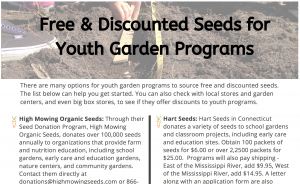 This document lists companies and organizations that provide free and/or discounted seeds for youth garden programs. This list is not specific to any state or region, so you may also want to check with local stores and organizations if you are looking to source seeds for your youth garden program. View Resource »
This document lists companies and organizations that provide free and/or discounted seeds for youth garden programs. This list is not specific to any state or region, so you may also want to check with local stores and organizations if you are looking to source seeds for your youth garden program. View Resource »
American Indian Traditional Foods In USDA School Meals Programs: A Wisconsin Farm to School Toolkit
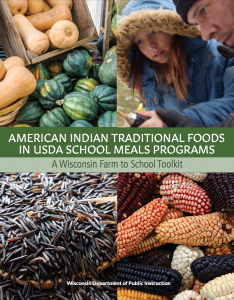 This resource resource was created to help source, menu, credit, and use more traditional foods in school meal programs. The Toolkit features native and traditional foods to include in school menus, new recipes for schools use, menu planning support, and procurement information. View Resource »
This resource resource was created to help source, menu, credit, and use more traditional foods in school meal programs. The Toolkit features native and traditional foods to include in school menus, new recipes for schools use, menu planning support, and procurement information. View Resource »
The Three Sisters
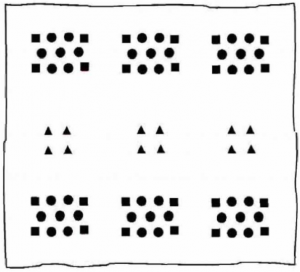 This comprehensive project (designed for 5th graders) incorporates concepts of plant physiology, companion planting, ecology, history, and ethnobotany. It links to Next Generation Science Standards and is written to span two school years, but concepts could be adapted for shorter lessons. View Resource »
This comprehensive project (designed for 5th graders) incorporates concepts of plant physiology, companion planting, ecology, history, and ethnobotany. It links to Next Generation Science Standards and is written to span two school years, but concepts could be adapted for shorter lessons. View Resource »
A similar lesson for younger students can be found here.
Want to cook with your Three Sisters harvest? Here’s a recipe!
